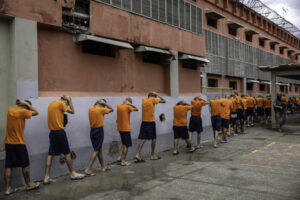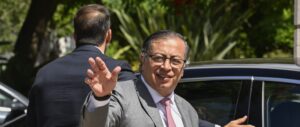Brazil’s recent country-wide demonstrations protesting a broad range of political and social conditions are interesting for reasons that go well beyond the specific issues raised by the protesters.
First, the content of the protests themselves and the tepid response of the government of President Dilma Rousseff show how out of touch the Worker’s Party (Partido dos Trabalhadores, PT) has become with the enthusiastic and large portion of the population that first elected Lula in 2002. This same influential base re-elected him in 2006 and then elected Dilma as his successor in 2010, albeit with less excitement. Despite running on a platform that condemned corruption, Lula and Dilma’s PT has been plagued by continuous corruption scandals throughout its 11-year rule, sending the message that politics have remained business as usual. Indeed, polls show that most protesters and those in the population they symbolize find government institutions and political parties in general unable and unwilling to represent their demands.
The economic policies started by Fernando Henrique Cardoso in the 1990s and continued by both Lula and Dilma stabilized the economy and raised Brazil to a world economic power status. Domestically, poverty alleviation policies, the expansion of opportunities for higher education, and increased availability of credit for those previously excluded from the consumer economy have created a new segment of the middle class. But while Brazil has been lauded for its middle-class growth, this new group finds itself heavily indebted and reliant on woefully inadequate public services—especially regarding health, primary and secondary education, and transportation.
While the catalyst for the demonstrations was the Free Transportation Movement (Movimento Passe Livre, MPL), the protests quickly escalated. Aided by social media, the protests became an outlet for the pent-up demands and frustrations of the broad segment of the middle and working classes that do not profit from Brazil’s economic growth. In addition, the emergence of Brazil’s version of the Millenium generation (students and recently graduated twenty-somethings struggling with under- and unemployment) augmented the participation and enthusiasm of the demonstrations. These segments were outraged by the vast sums (approximately US$14 billion) being spent by the government on preparations for the World Cup in 2014 and Olympics in 2016 while neglecting basic public services. Corruption and lack of transparency in awarding construction contracts has strengthened the disillusionment.
The violent reaction of the police in most cities shows how unprepared they were to deal with large demonstrations. Middle class protestors—who experienced what poorer segments of the population live through routinely—added curbing police violence to their demands.
Certain media outlets have focused on the presumably amorphous and largely leaderless nature of the protests, but that view neglects the social context of Brazil’s vibrant civil society and history of highly effective social movements. While the MPL started the process, in each of the 100 cities nationwide where local protests erupted, local social movements and civil society organizations already involved a wide variety of issues were ready to intensify the struggle. In Rio, for example, corruption, misplaced spending, unnecessary low-income neighborhood removals linked to the mega-events, and police violence have been addressed by such organizations as Meu Rio , Comité Popular Rio Copa e Olimpíadas, Rio on Watch (a project of Catalytic Communities), and Redes da Maré, to name a few. And while the media concentrated on protests in Rio’s city center, the state government headquarters, and the governor’s apartment in Rio’s affluent south zone, little attention was paid to demonstrations at a number of Rio’s squatter communities (favelas), whose populations are affected even more severely by the lack of effective public spending and police misconduct.
Soon after the first protests erupted, Dilma took the initiative to meet with the MPL leaders, mayors, governors, and the judiciary to address the popular demands. Her response was to create the National Pact (Pacto Nacional)—a series of hasty measures seen largely as band-aid solutions to problems with health, education, corruption, and the electoral system—all with an eye on next year’s presidential elections. For example, her proposal to address public health inadequacies was to create a National Pact for Health, which includes importing foreign doctors from Portugal, Spain, and Cuba to work in rural and out-lying urban areas. The doctors, in addition to being unfamiliar with local contexts, would not even have to pass licensing exams in Brazil. The proposal ignores the fact that Brazil does not lack doctors. Rather, there is a poor distribution of doctors throughout the country, as well as abysmal conditions in public clinics and hospitals in these areas, which often lack basic equipment, medicine, and salaries for public health personnel. Brazil’s per capita health spending is from one-third to one-half less than its neighbors Argentina, Uruguay, and Paraguay.
Finally, of all the issues raised by the protestors, the one totally ignored by Dilma was public safety. The reaction of the police to the demonstrations shows a total lack of preparedness in dealing with large scale protests—the size of which Brazil had not seen since the early 1990s when President Fernando Collor was impeached. While the vast majority of demonstrators acted peacefully, there was a small minority of vandals (vândalos), who threw molotov cocktails, smashed bank and store windows, and looted. This minority created a climate in which police indiscriminately arrested civilians and made use of non-lethal weapons (pepper spray, tear gas, and rubber bullets) against all demonstrators. This criminalization of democratic expression set back the limited advances the police have made in the last decade to improve relations with society. While the jurisdiction of the police is largely at the state level in Brazil, the federal government has the opportunity and resources—and indeed the duty—to set national guidelines for the use of force. Leaving public safety and the police out of the National Pact marginalizes the police forces and maintains the status quo, allowing the police to become the scapegoat for the very ills of society that are being protested.


